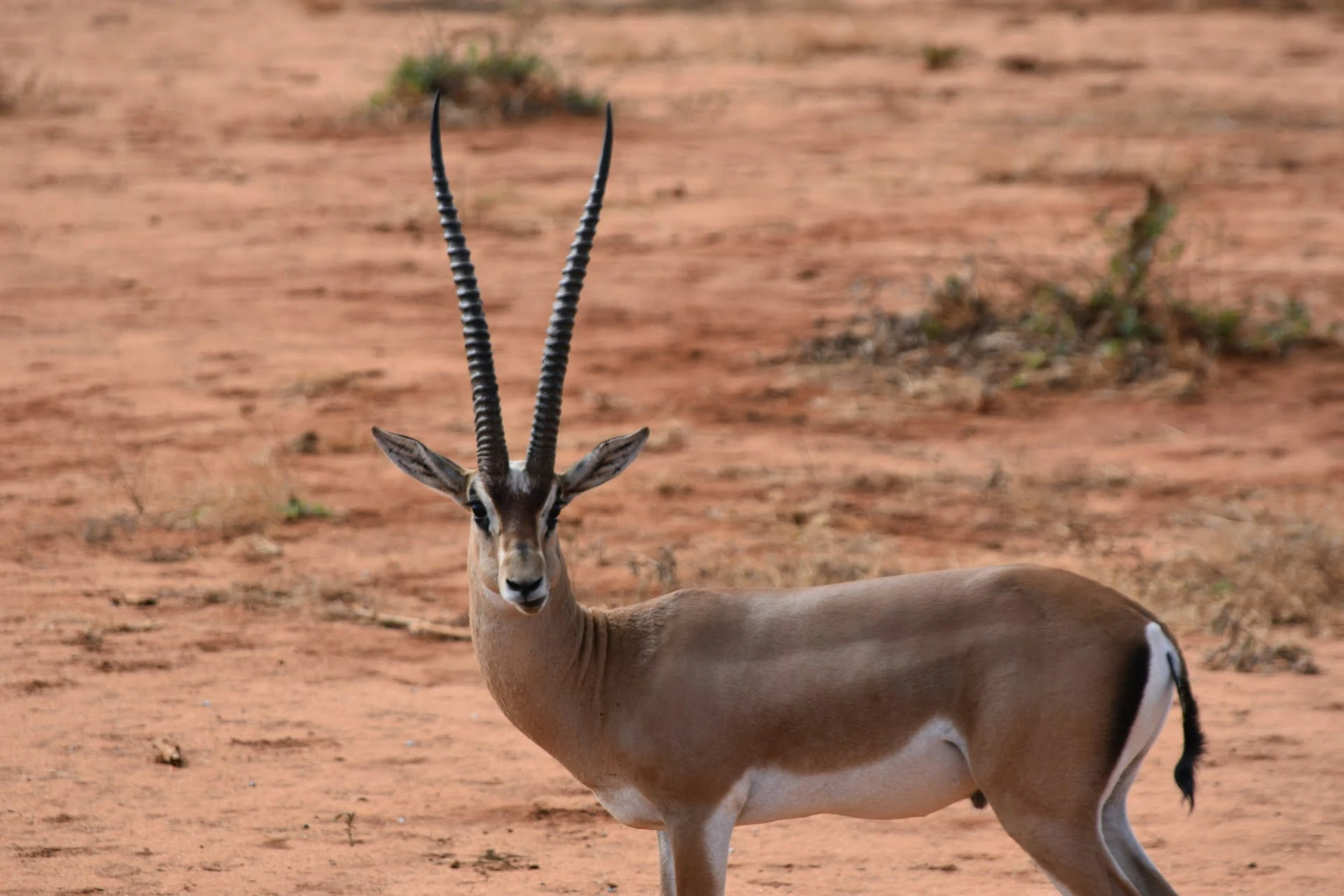Tsavo National Park
About Tsavo
Tsavo National park is the largest national park in kenya and it is one of the largest national park in the world. This park is devided into two Tsavo East National Park and Tsavo West National Park which are seperated by a railway line. This Park covers total area of over 22,000 square kilometers.
Tsavo East is one of the oldest parks in the country. It’s located in the southeast, near the town of Voi. Tsavo East is massive, covering an area of 13,747 square kilometers.
Tsavo West is also in Kenya’s Coast Province. While smaller than Tsavo East, spanning 9,065 square kilometers. Tsavo West opened its doors in April 1948.
The park is famous for the “Man-Eaters of Tsavo,” a pair of lions that caused havoc during the construction of the Kenya-Uganda railway in the late 19th century.
Key Features of Tsavo East
Tsavo East, nicknamed the “Theatre of the Wild,” is famed for its vast open plains and semi-arid landscapes. A standout attraction is Mudanda Rock, a towering rock outcrop that provides panoramic vistas of the park. The Yatta Plateau, stretching an incredible 300 kilometers, is the world’s longest lava flow. The life-giving Galana River attracts diverse wildlife like elephant herds, african lions, giraffes, zebras, and numerous bird species. Tsavo East is also renowned for its unique population of “red elephants” that appear reddish from bathing in the park’s distinctive soil. This behavior not only gives them their striking color but also helps protect their skin from the sun and insects.
Key Features of Tsavo West
Tsavo West, dubbed the “Land of Lava, Springs, and Man-Eaters,” boasts dramatic and varied terrain. Mzima Springs, a lush oasis fed by underground streams, allows visitors to observe hippos and crocodiles through underwater viewing chambers. The Shetani Lava Flows showcase striking black lava formations sculpted by volcanic forces. This diverse landscape, from rugged lava fields to scenic springs, provides a backdrop for spotting iconic wildlife species like elephants, lions, leopards, rhinos, buffaloes, as well as cheetahs, hyenas, and a plethora of bird life. Both parks offer unparalleled opportunities to explore Kenya’s rich natural heritage and witness remarkable wildlife in their native habitats.
Tsavo National Park Safaris
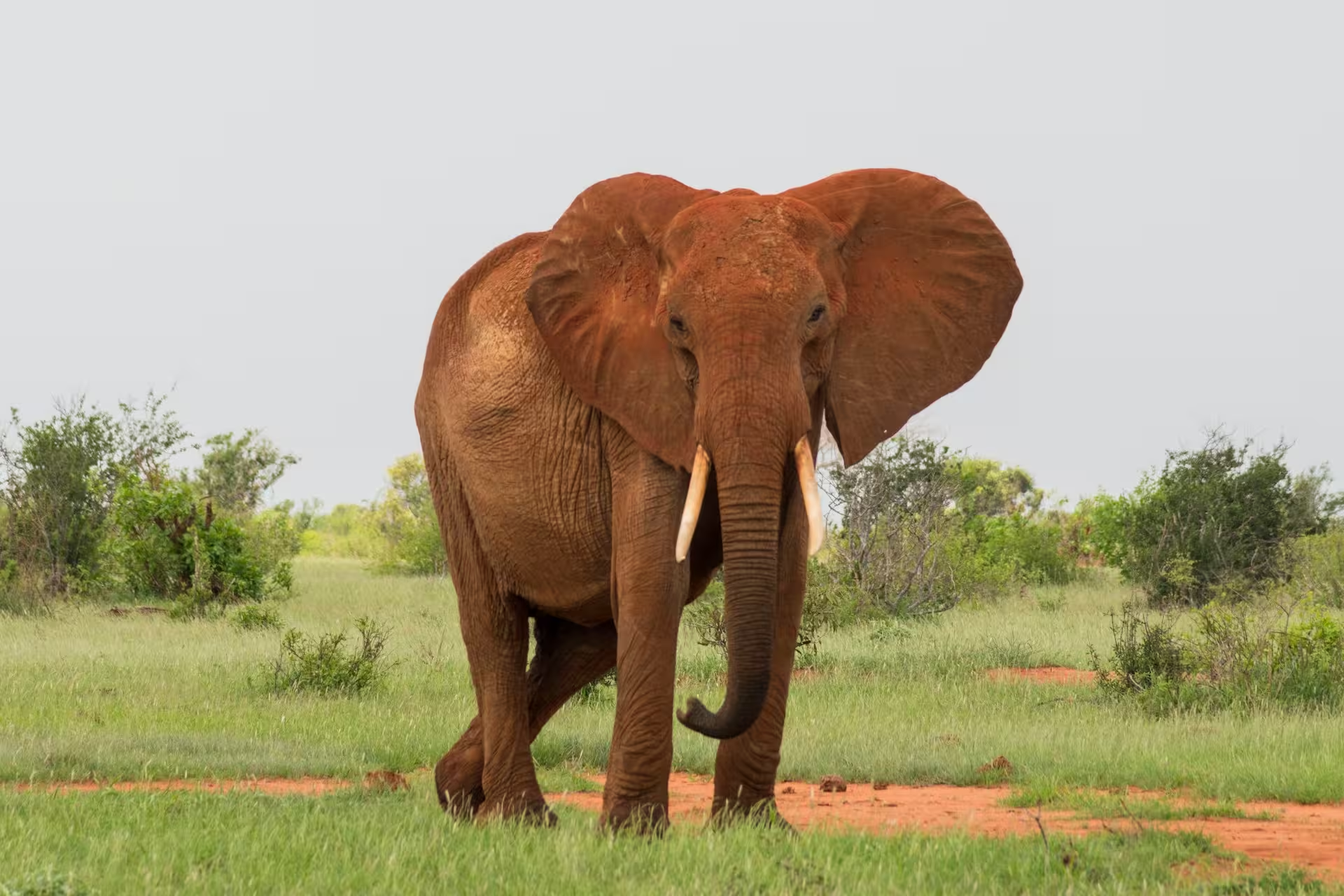
3 Days
Tsavo East & Tsavo West Safari
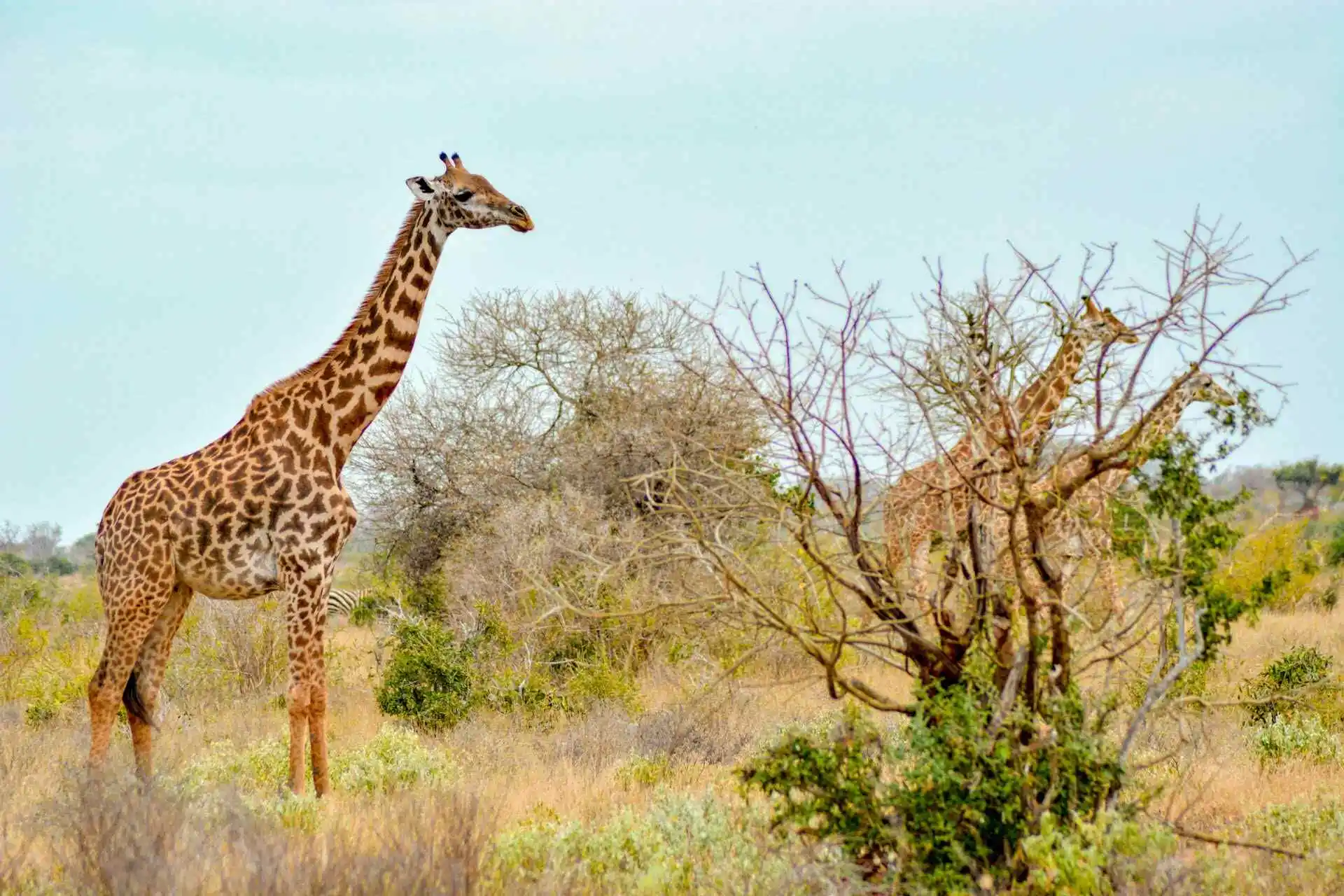
7 Days
Masai Mara, Tsavo & Amboseli

5 Days
Tsavo & Amboseli Safari
Wildlife in Tsavo
Wildlife in Tsavo East
Tsavo East is a great place to see many different animals on safari. The park is famous for its big herds of “red elephants.” These elephants look reddish because they roll around in the park’s red soil, which helps protect their skin. You can also spot lions with their big manes, tall giraffes, striped zebras, and many kinds of birds like ostriches, kestrels, and buzzards roaming the open plains.
Wildlife in Tsavo West
Tsavo West is home to the “Big Five” animals – elephants, lions, leopards, rhinos, and buffaloes. A highlight is Mzima Springs, where you can see hippos and crocodiles swimming in the clear water through special underwater viewing areas. The park’s different landscapes, from volcanic hills to thick bushes, make it a great place to look for cheetahs, hyenas, and lots of bird species. You might even spot some rarer animals like the Grevy’s zebra and the African wild dog. With so many different creatures, Tsavo West is an exciting place for wildlife lovers and photographers.

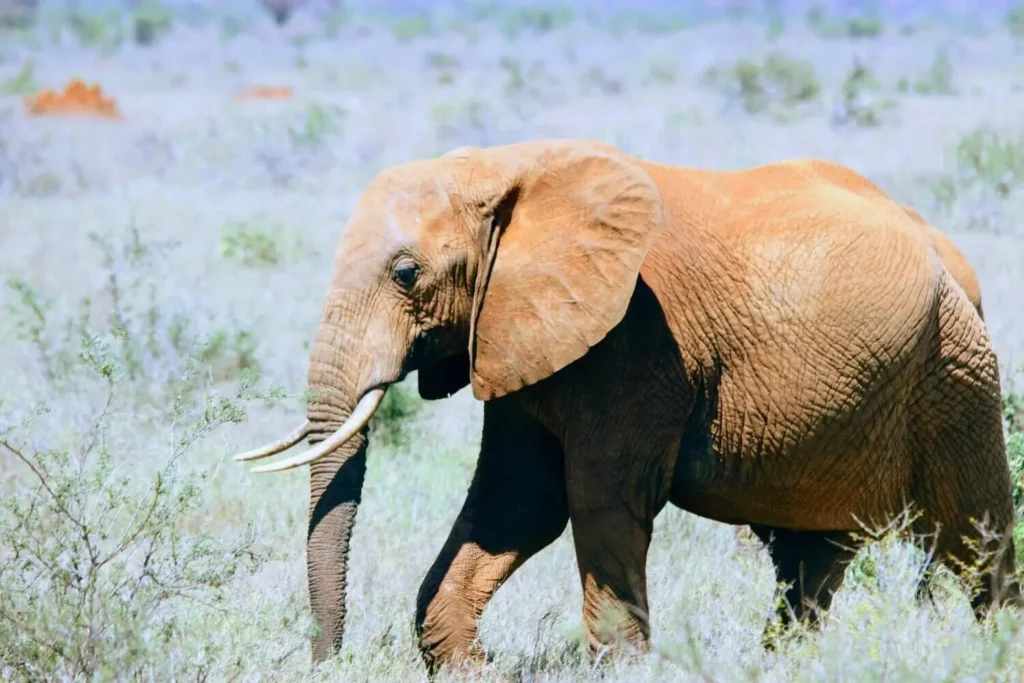
Mammals
- African Bush Elephant
- African Lion
- African Buffalo
- Black Rhinoceros
- Leopard
- Gerenuk
- Grevy’s Zebra
- Somali Giraffe
- Oryx
- Lesser Kudu
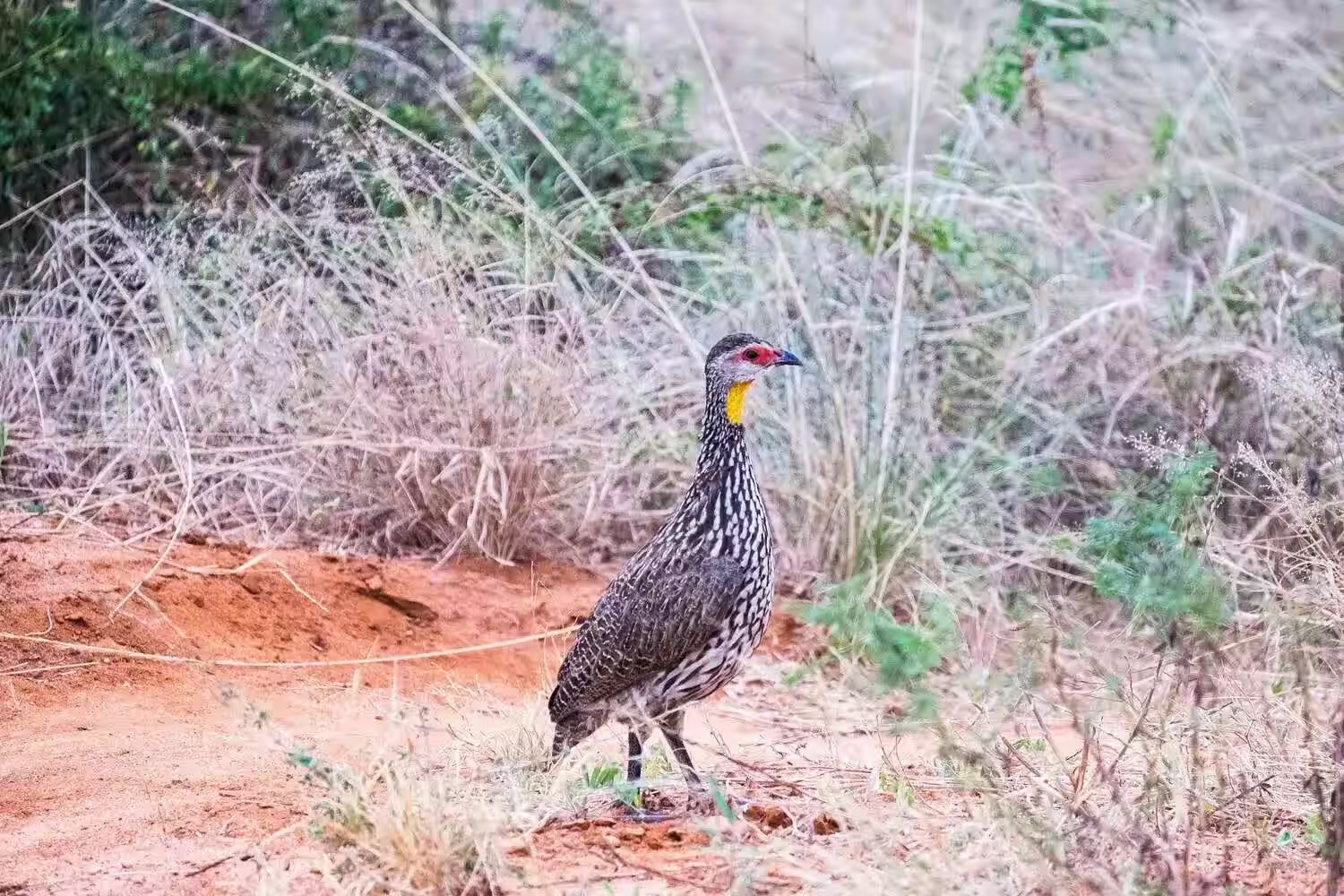
Birds
- Ostrich
- Kori Bustard
- Secretarybird
- African Paradise Flycatcher
- Martial Eagle
- Lilac-breasted Roller
- Grey-crowned Crane
- African Fish Eagle
- Bateleur Eagle
- Red-billed Hornbill
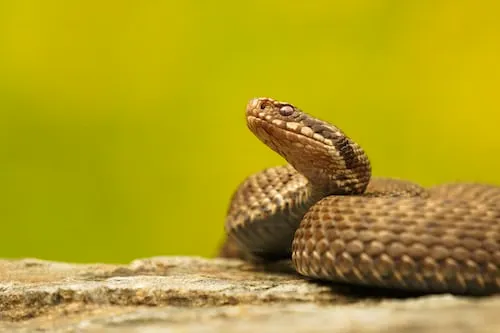
Reptiles
- Nile Crocodile
- African Rock Python
- Savannah Monitor Lizard
- Leopard Tortoise
- African Agama Lizard
- Puff Adder
- Pancake Tortoise
- Helmeted Terrapin
- African House Snake
- Jackson’s Chameleon
Best Time to Visit Tsavo
The dry months from June through September are popular since the lack of rainfall means animals have to stick close to water sources, making them easier to spot. Just be prepared for bigger crowds during this peak season.
If you don’t mind dealing with some serious heat, the hot season from October to February can be an amazing time to see wildlife congregating around rivers and waterholes to quench their thirst.
For a more serene experience with lush green landscapes and fewer tourists, consider visiting during the rainy season from March to May – just keep in mind that heavy downpours can make some areas inaccessible by turning roads into muddy messes. At the end of the day, there’s no wrong time to visit this incredible park, so pick the conditions that suit you best.

Ideal Months to Witness Natural Events in Tsavo
Wildlife Migration
(June to September and January to March)
While not as famous as the Great Migration in the Maasai Mara, Tsavo still experiences seasonal movements of wildlife, particularly between Tsavo East and Tsavo West. This migration pattern varies depending on factors such as rainfall and food availability.
Elephant Mud Bath
(June to September)
Elephants in Tsavo are known for their frequent visits to watering holes and mud baths, especially during the dry season. Watching these majestic creatures roll around in the mud is a memorable sight.
Bird Migration
(March to May and October to December)
Tsavo is a haven for birdwatchers, especially during the wet season, when migratory bird species arrive. Witnessing the arrival and departure of these birds adds to the park’s biodiversity.
Tsavo Climate
Tsavo National Park is known for its hot and dry conditions, with average temperatures ranging from 24°C to 30°C. But be prepared for some days to soar well above 35°C, especially during the dry season. Rainfall is scarce here, averaging just 350 millimeters annually, mostly falling in two distinct seasons – the dry season from December to March and the wet season from April to November.
The dry months are typically hot and sunny with little to no rain, making it easier to spot wildlife as the sparse vegetation provides less cover. In contrast, the wet season transforms the landscape into a lush, green oasis after short but intense downpours. While the thicker greenery makes animal sightings trickier, it’s a beautiful time to visit with fewer tourists around.
Tsavo climate chart
| Month | Jan | Feb | Mar | Apr | May | Jun | Jul | Aug | Sep | Oct | Nov | Dec |
|---|---|---|---|---|---|---|---|---|---|---|---|---|
| Min (°C) | 18 | 19 | 18 | 19 | 16 | 15 | 14 | 15 | 16 | 17 | 18 | 17 |
| Max (°C) | 30 | 31 | 30 | 28 | 27 | 26 | 25 | 27 | 29 | 30 | 29 | 28 |
How to Reach Kenya
Getting to Kenya is a breeze, thanks to great air connections from across the globe. The main entry point is Nairobi’s Jomo Kenyatta International Airport, but you can also fly into other international airports like Mombasa, Kisumu, and Eldoret.
Top airlines like IndiGo, Emirates, Kenya Airways, KLM, Air France, British Airways, Etihad, Qatar, and Swiss offer direct flights to Kenya from major cities worldwide. Whether you’re coming from Europe, North America, Asia, or elsewhere in Africa, these well-known carriers make your journey hassle-free.
With so many flight options available, getting to the breathtaking landscapes and incredible wildlife of Kenya has never been easier. Just hop on a plane, and you’ll be exploring this East African gem in no time!

How to get to Tsavo
To kickstart your Tsavo National Park adventure, many travelers begin with a flight to either Jomo Kenyatta International Airport (NBO) in Nairobi or Moi International Airport (MBA) in Mombasa. From there, the choice is yours. You can opt for an exciting road trip, where you’ll tackle some bumpy roads along the way, or you might prefer a quick and hassle-free air transfer directly to your safari lodge. We’re here to provide all the information you need to make the best decision for your journey. When planning your trip, consider the season, as wildlife events like the movements of migratory species are most impressive between certain months, particularly from June to September.
Getting to Tsavo East
By Road from Nairobi: This is the most common way to reach Tsavo East. It’s a 4-6 hour drive from Nairobi, passing through towns like Voi and Mtito Andei. You’ll get to enjoy scenic views along the way, including the Athi River and Yatta Plateau.
By Air: You can also take a charter flight from Nairobi or other cities to one of the airstrips inside or near Tsavo East, like Voi, Sala, or Manyani Gate. These flights are quicker but more expensive.
Getting to Tsavo West
By Road from Nairobi or Mombasa: Drive from Nairobi (4-6 hours through Mtito Andei) or Mombasa (2-3 hours). If coming from Mombasa, you’ll see beautiful coastal scenery before entering the park’s western gate.
By Air: Like Tsavo East, charter flights are available to airstrips near Tsavo West, such as Voi or Taita Hills Wildlife Sanctuary. From the airstrip, you’ll need a ground transfer to your accommodation inside the park.
Dreaming of an up-close encounter with Africa’s iconic wildlife? Your Tsavo safari awaits!

